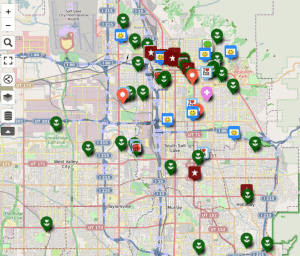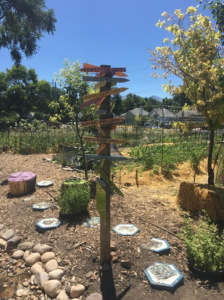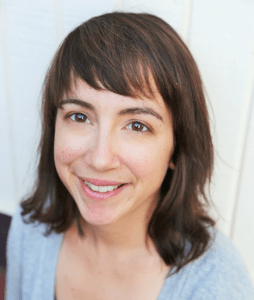By Emily Nicolosi for EDRBlog.org

Online collaborative community resource mapping is a new phenomenon that helps to connect local organizations and volunteers in building more sustainable and social justice cities. One such effort, #MapJam, boasts maps of grassroots sharing projects, cooperatives, community resources, and the commons in 72 cities on 6 continents, including our project in Utah. The Utah Resilience Map (the map, or URM) was born in out of a #MapJam in the summer of 2016. Local changemaker and permaculture enthusiast Jim French saw the opportunity a mapping project would hold to help spread the word about and facilitate collaboration between local projects. Today, the URM features over 90 projects in 9 different categories: production, intentional living, finance, Community Supported Agriculture (CSA), community food, civic groups, learn & play, alternative healing, and online communities.
The URM is a community-authored project. While French and I maintain the website, conduct outreach, and add new points to the map, the project itself belongs to the community. Anyone is invited to contribute to the map, so long as they generally fit the theme of the map and submit a project description and address. We hope that the map’s community authorship boosts its credibility and accountability. In an effort to maintain transparency and communication, the map’s website describes the project’s goals, and we also have a Google Form for adding to the map, a feedback form, and contact information listed.
Get notified when new articles are posted to the EDR blog – sign up for our email list »
The intended audience for this project is individuals who are looking to connect with local organizations working on a sustainability or social justice issue they are interested in, which can be as simple as finding the closest community garden or CSA. We also hope that organizations and groups will use the map to find similar groups in their area, and perhaps be able to contact and work with those groups. At least, we hope that this is the case as we do not have access to data regarding how the map is used or who is using it. Anecdotally, we have spoken to many community members that have expressed that the map has helped them to find local projects that were previously unknown to them.

Collaboration between groups can help achieve greater goals in the transition to a more sustainable and socially-just world, and we hope that increasing the visibility of local projects via the map aids in this process. Jim French and I have experience working with community permaculture farms for many years, and have helped to connect people interested in that area to each other and to conventional political activists. At the same time that the map is a great resource, we recognize that face-to-face dialogue is also crucial in connecting local projects and individuals. Events in a fun, interactive setting that attact a variety of interests, like the Clean Air Fair, have aided greatly in spreading word about the map and connecting diverse strategies for environmental improvement.
A challenge with participatory mapping is the capacity to include diverse types of knowledge and representative of a community. While practicing this principle with the Utah Resilience Map was difficult because of the types of information the map intended to represent, we have taken the measures available to us to cultivate diversity and inclusivity. On our website and communications, we extend the invitation for anyone to add to the map, and also broadly define projects and categories that can be included. For example, most of the points on the URM had a specific location, but the category of “online/spatially fluid communities” was added to address communities and groups that do not own or rent a specific building or space, but that have a notable presence in Salt Lake. While our abilities to conduct outreach are limited, we have tried to make the project visibile to a broad audience through the production of our website.
In web-based applications, it is difficult to know who is included and excluded because user identities are not known. We would like to conduct a survey in the future so that we might get a better idea of who is using the map, and how we can expand it to people and places in Utah that are currently not fully represented. We will also continue to showcase the map at local events to help increase visibility and promote collaboration and dialogue with a variety of individuals and organizations. It is difficult to market the map to a broad and diverse set of potential users given our own resource constraints, and we encourage everyone who knows about it to help spread the word.
Recognizing these challenges, we believe that mapping grassroots solutions is an important part in transitioning to a more just and sustainable world. Collaborative online maps enable participants to gain easy access to information and networks in real time and space, making the connections so needed in building alternatives. In the age of Google Maps, used ubiquitously (at least in our corner of the planet) to navigate the world and make decisions on where to spend time, the similarity of these collaborative maps to Google Maps makes them easy to use.
The creation of grassroots alternatives maps brings visibility to projects that would otherwise be invisible in the online mapping environment. By creating these maps, we recognize the possibility of alternatives to the systems that perpetuate social and environmental crises and help to connect those working on them. We hope that through celebrating a plurality of solutions these maps might have a better chance of capturing a broad range of participants and facilitating collaboration between them.
 Emily Nicolosi is a recent PhD graduate of the Department of Geography at the University of Utah. Emily’s research interests include social movements, sustainability, and social justice. Her dissertation work focuses on grassroots innovations for sustainability as bottom-up climate change mitigation responses. She is also interested in the geography of hate groups and crimes in the United States. Outside of academia, Emily enjoys painting, skiing, and mountain biking. A native of New York, she particularly appreciates the fantastic snow and mountains that Utah offer.
Emily Nicolosi is a recent PhD graduate of the Department of Geography at the University of Utah. Emily’s research interests include social movements, sustainability, and social justice. Her dissertation work focuses on grassroots innovations for sustainability as bottom-up climate change mitigation responses. She is also interested in the geography of hate groups and crimes in the United States. Outside of academia, Emily enjoys painting, skiing, and mountain biking. A native of New York, she particularly appreciates the fantastic snow and mountains that Utah offer.
